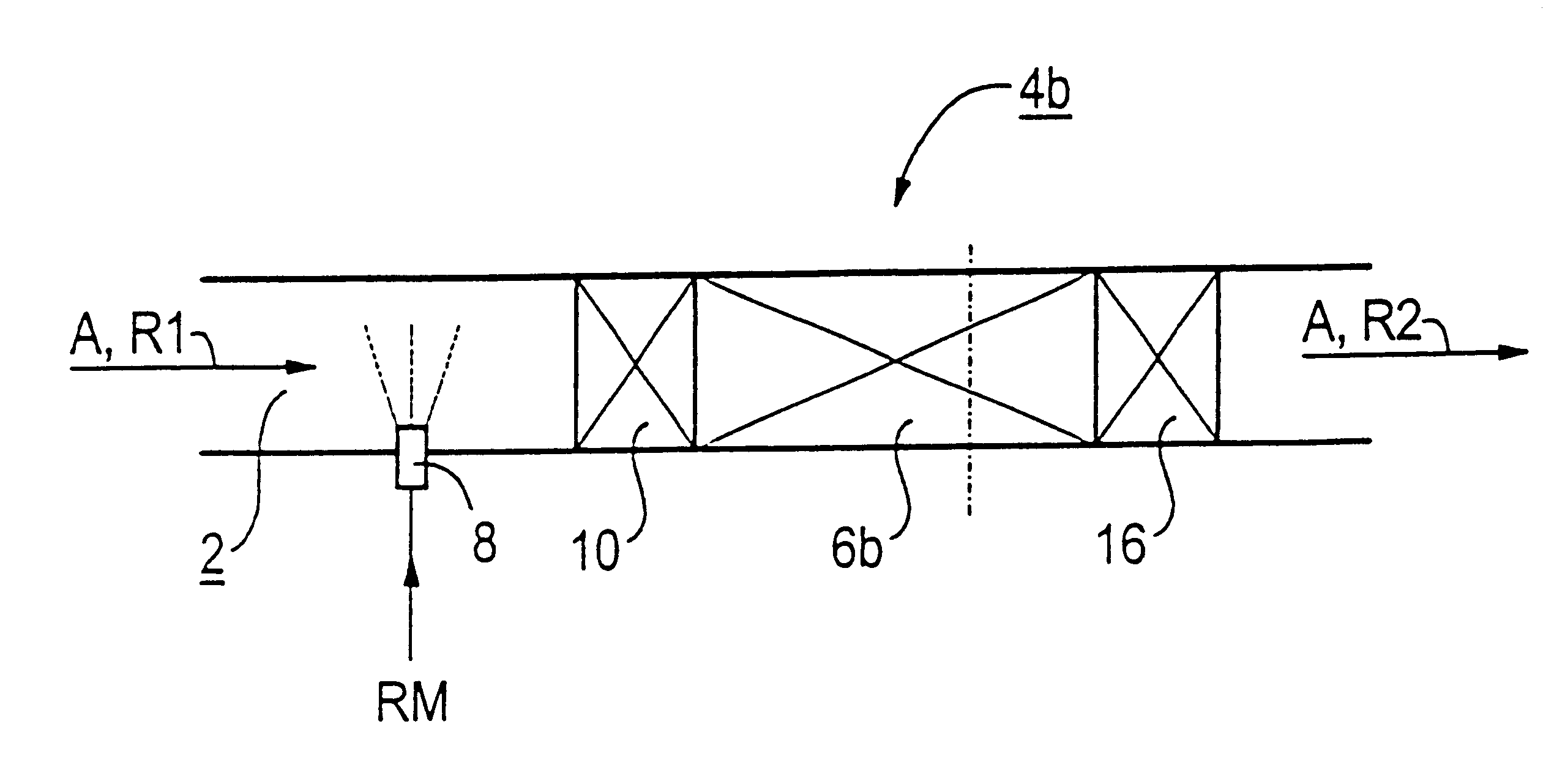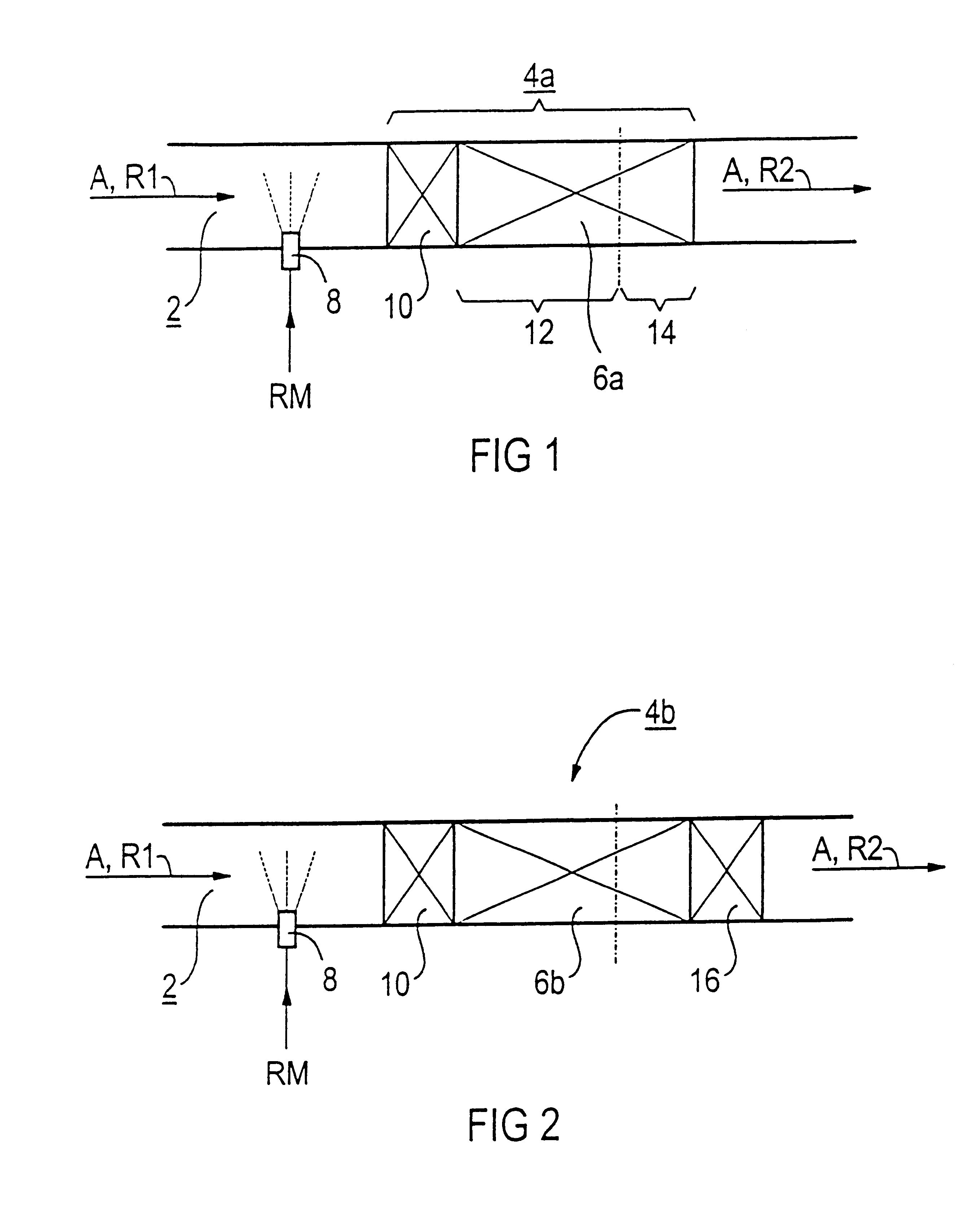Method and device for reducing the number of particles in an exhaust gas
a technology of exhaust gas and particle emission, which is applied in the direction of separation process, machine/engine, mechanical apparatus, etc., can solve the problems of increasing agglomeration, small and very small particles, etc., and achieve the effect of reducing the level of particle emissions, increasing the efficiency of electrostatic soot or ash separators, and effective separation
- Summary
- Abstract
- Description
- Claims
- Application Information
AI Technical Summary
Benefits of technology
Problems solved by technology
Method used
Image
Examples
Embodiment Construction
[0032]In accordance with FIG. 1, exhaust gas A which is formed during the combustion of a fuel which contains sulfur S is guided inside an exhaust pipe 2. The sulfur dioxide SO2 which is formed in the exhaust gas A as a result of the combustion of the sulfur flows through a catalytic converter system 4 which comprises an SCR catalytic converter 6a. The SCR catalytic converter 6a is used both for oxidation of the sulfur dioxide SO2 to form sulfur trioxide SO3 and for the selective catalytic reduction of nitrogen oxide NOx contained in the exhaust gas A. The reducing agent RM, which contains ammonia NH3 required for the reduction of the nitrogen oxides NOx, which in the exemplary embodiment is aqueous urea solution, is introduced into the exhaust pipe 2 upstream of the SCR catalytic converter 6a, as seen in the direction of flow of the exhaust gas A, and is mixed with the exhaust gas A. In the exemplary embodiment, an atomizer nozzle 8 is provided for this purpose, by means of which t...
PUM
| Property | Measurement | Unit |
|---|---|---|
| temperature | aaaaa | aaaaa |
| temperature | aaaaa | aaaaa |
| temperature | aaaaa | aaaaa |
Abstract
Description
Claims
Application Information
 Login to View More
Login to View More - R&D
- Intellectual Property
- Life Sciences
- Materials
- Tech Scout
- Unparalleled Data Quality
- Higher Quality Content
- 60% Fewer Hallucinations
Browse by: Latest US Patents, China's latest patents, Technical Efficacy Thesaurus, Application Domain, Technology Topic, Popular Technical Reports.
© 2025 PatSnap. All rights reserved.Legal|Privacy policy|Modern Slavery Act Transparency Statement|Sitemap|About US| Contact US: help@patsnap.com


